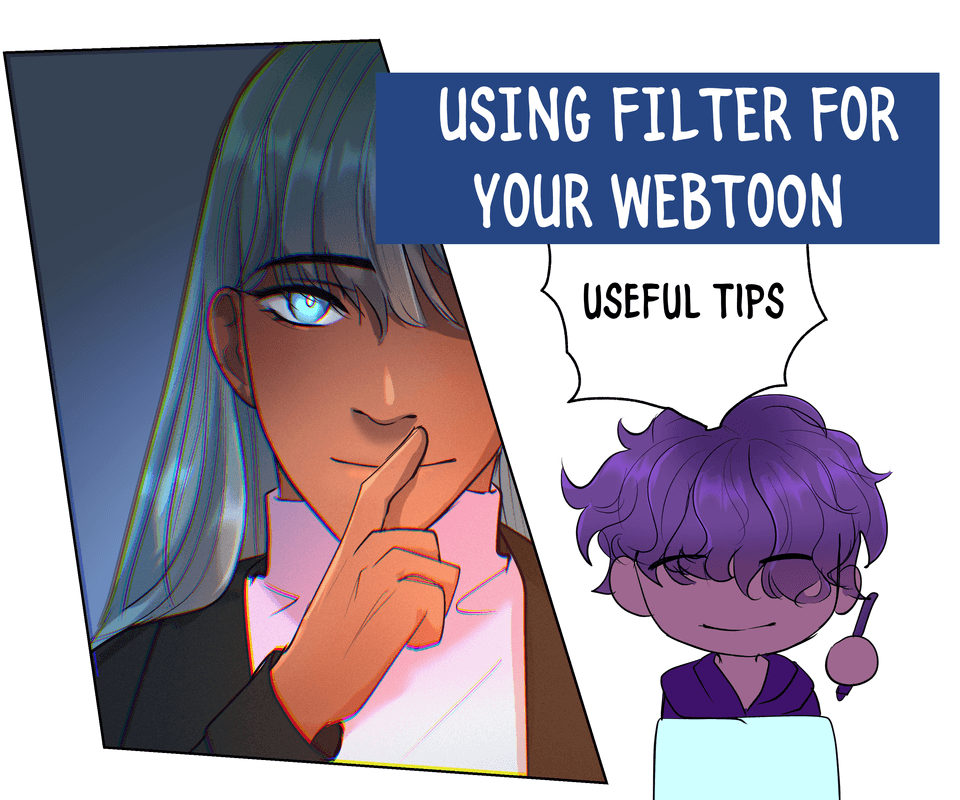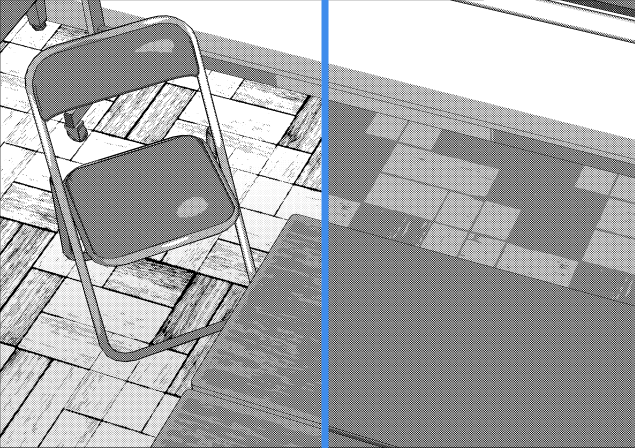14. Creating the Evolution (2): Character
Changing the colors
I’m going to change the color of the standard character while referring to the rough draft of the evolution. I don’t need the eye patch, so I hide the layer.
I change most of the colors using color correction layers ([Hue/Saturation/Luminosity], [Brightness/Contrast], [Level Correction] or [Tone Curve]).
Sometimes I can’t get the exact color only by changing the hue.
In these cases, I lower the saturation down to a grey color, then paint the color on a new layer above and use blending modes like [Overlay] to transfer the color.
When necessary, I add more detail or add more layers to adjust the color further.
The sleeves of the evolution will have a black gradient, so I add that on a new layer.
Sometimes the reflected light effect gets weaker when the hue is changed, so I paint it back in in these cases.
This is how it looks once I’ve changed the colors to match the rough draft. I changed the colors of the hair, eyes, decorations, metals, armor, jacket, clothing, and horse.
I’ll go back to the detailed parts later. For now I change the overall colors and move forward while checking the overall composition.
I change some of the colors from the rough draft if they don’t work like I thought. For example, I had originally planned for the inner sleeves to be a bright blue, but I decided that purple worked better.
Extra details
For the extra details, I start out by color flatting with the rough draft layer in the same way as I did for the standard version.
When I’ve finished color flatting, I put the flat color layer back and paint the details on top.
Effects
I change the color of the sword effect to be more purple, and I draw some spirits as a new effect. For these, I use the same method as the sword effect in part 12.
I change the color of the dust to be more fiery, and then add more fire sparks and soot as if there are flames reaching up.
However, the ground isn’t part of this illustration, and I don’t imagine the ground being completely ablaze, so I simply add a new layer above the dust (“dust 1”) and change the color with an [Overlay] layer. Then I make a “fire” layer set to [Add (Glow)] and paint some orange flames.
Next I add the soot on another new layer set to [Add (Glow)].
I then add some yellow to the bottom of the soot pieces facing the flames.
Finally, I blur the sparks and soot using the [Filter] menu > [Blur] > [Motion blur].
This is how it looks so far.
























Comment